The new decade has not opened the way that we would have wanted. The challenges that in 2019 seemed almost insurmountable now play second fiddle to what will define 2020 – COVID-19 and all the ramifications it brings. However, we all have to eat and a new decade does offer the opportunity to reflect on what has happened in relation to food trends over the past 10 years, so we can anticipate what lies ahead.
The topic I chose for my Nuffield Scholarship in 2011 was “Dominance, competition and consumer demand – the impact on meat protein producers.” Back then we were in a recession and the world was a different place. But consumer demand was and will remain a pivotal influence on the food industry. Over the last 10 years, new products and fads have entered our lexicon, such as avocado toast, sustainable cooking and ‘free-from’ foods. Online influence is playing a greater role.
There is, however, an overriding trend, that has persisted through the decade, with many other spin-off trends emerging from it. The 2010s was the decade in which health and wellness jumped from being considered hippie-ish to people appreciating that there was more to health than reactively treating illness. Its popularity was helped by celebrity endorsements, such as Oprah, and in 2014, Time
magazine said it was the start of a mindful revolution.
As “wellness” is quite a vague term, incorporating body and mind, it is a fertile place for entrepreneurs to explore. It also happens to be quite profitable, so don’t expect this trend to fade any time soon.
But first, who are we now?
Ireland’s population in August 2020 was 4,946,815, just 0.06% of the total global population. In 2010, our population was 4,554,321. Rural people make up 37% of our population, leaving 63% in urban centres. Although our population has increased by over 350,000, the rural to urban ratio has not changed over the decade. The median age in Ireland is 38.2 years, up from 34.4 in 2010. In developed countries the older demographic is set to become the biggest cohort of the population. This shift will affect dietary choices.
Many different factors have helped to shape and mould our society over the past decade. Some of these are readily identified, while others are more diffuse. This review looks at the major and identifiable changes.
The start of the decade was marked by the banking crisis. The bank guarantee may have been in 2008, but Ireland’s bailout was only announced in November 2010. Austerity followed and it was 2014 before green shoots started to appear.
The food euro
CSO Household Budget Survey (HBS) data shows that the average weekly expenditure on food for all Irish households was €810 in 2010, 3% higher than the €787 recorded five years earlier. The proportion of this spent on food dropped from 18.1% in 2005 to 16.2% in 2010. In 2010, the proportion of total household expenditure spent on housing (rent, mortgage etc) exceeded that spent on food for the first time.
HBS data from 2015-2016 showed the weekly expenditure for all households in the State to be €845 (+4.3%). Again, the proportion of total expenditure relating to food dropped, falling to a low of 14.6%. The proportion of total expenditure on food has declined steadily over the past 35 years, from 27.7% to 14.6%. Expectations are that the HBS of 2021 will reveal a further fall in the food euro.
The rise of the discounter
Statistics show that the value of the grocery market in Ireland declined in 2010. This was due to deflation and shoppers trading down price tiers, switching retail outlets, and seeking out promotional offers (yellow pack) with value lines the only market segment to report market growth in 2010.
Kantar data showed increasing sales and store numbers in the discount segment in 2010.
This trend continued unabated throughout the decade (see graphs). Private labels also started to put increasing pressure on traditional brands, accounting for 33% of grocery sales. By 2019, this figure stood at 56%. Bucking the cheaper option was organic food sales, which reached almost €100m in 2010. The vast majority (70%) of this was imported. The trend towards the health-conscious consumer, which would be a dominant and lasting influence, was starting to raise its head.
Food porn
The now Facebook-owned Instagram social media platform launched in 2010. Chefs, social media influencers, and marketing managers latched on to ‘Instagrammable food’, believing that Instagram influences how we eat.
The site gained rapid popularity through the decade, surpassing one billion users as of May 2019. At the time of writing this, the most-liked photo on Instagram is a picture of an egg, with 54.4m likes. This post was created solely to surpass the previous record of “most likes” by Kylie Jenner. Instagram became the fourth most downloaded mobile app of the 2010s.

Viral foods are focused more on looks than on taste. According to Sinead McCarthy, researcher at the Teagasc Ashtown Food Centre, “if that is the selling point, many of these fads won’t last. Research shows that taste is the primary reason for consuming something. If it doesn’t taste good, it doesn’t matter what health, beauty or other benefits the product purports to have, you are not going to buy it again.”
In 2011, the Oireachtas library and research service published a spotlight report on obesity, outlining the scale of the issue, with 61% of Irish adults and 22% of children overweight (SLÁN 2007). The Healthy Ireland Survey showed that, in 2019, 60% of those surveyed were overweight. A drop of just 1% despite what McCarthy describes as “a mega trend developing in Ireland” – health.
In response to the SLÁN data, the Irish Heart Foundation (IHF) said that the overwhelming influences of obesity in 99% of the population are environmental. These include marketing, advertising, increasing portion sizes, accessibility and availability of foods and facilities, increased automation and increased car use among other factors.
The Lancet medical journal called out the primary culprit as the “powerful global food industry which is producing more processed, affordable, and effectively marketed food than ever before”. It referred to this trend as “passive overconsumption” – food getting cheaper with more efficient distribution and an increased supply of cheap, palatable, energy-dense foods that are well marketed.
Healthy kids meals
How a brand is perceived to be responding to the demands of consumers can play a role in its success. McDonald’s Ireland introduced a fruit bag, or carrot sticks, as an alternative to chips, and a bottle of water or a carton of milk instead of a fizzy drink in their happy meals in 2004. Social media pressure saw them introduce a wrap in 2018.
This “healthy alternative” was not introduced in the American market until 2011 when a number of fast-food chains started to latch on to the need to join the fight against childhood obesity. McDonald’s, Burger King and Subway hopped on the bandwagon.
The year opened with successive storms that battered the country, particularly in the south and west. However, free water falling from the sky only bolstered protesters’ opposition to charges being put on this our most precious commodity. In 2012, the Government confirmed that Bord Gáis would set up and run Irish Water. Rural people generally pay for water between local schemes and private wells but not even the rise of environmental concerns over water security could convince some people that water was worth paying for. Protesters vowed to continue their opposition until charges were abolished.
Olympic boost
Sporting events which attract crowds can provide good opportunities for food businesses. The Olympic Studies Centre called out the growth in sustainable food in London as one of the unseen benefits of London 2012. However, in advance of Rio 2016, critics were claiming that the sponsorship of the Olympics by companies such as Kellogg’s and Coca-Cola was promoting unhealthy foods that would not be consumed by athletes. Health, advertising, and marketing, again in the spotlight.
Horse meat scandal
This scandal emerged when Irish food inspectors found traces of horsemeat in some frozen beef burgers stocked by UK supermarkets, including Lidl and Tesco. The retailers acted quickly to appease customer concerns. Some analysts claim the move away from cheaper frozen products was short-lived, while others described it as having a “lasting effect”.
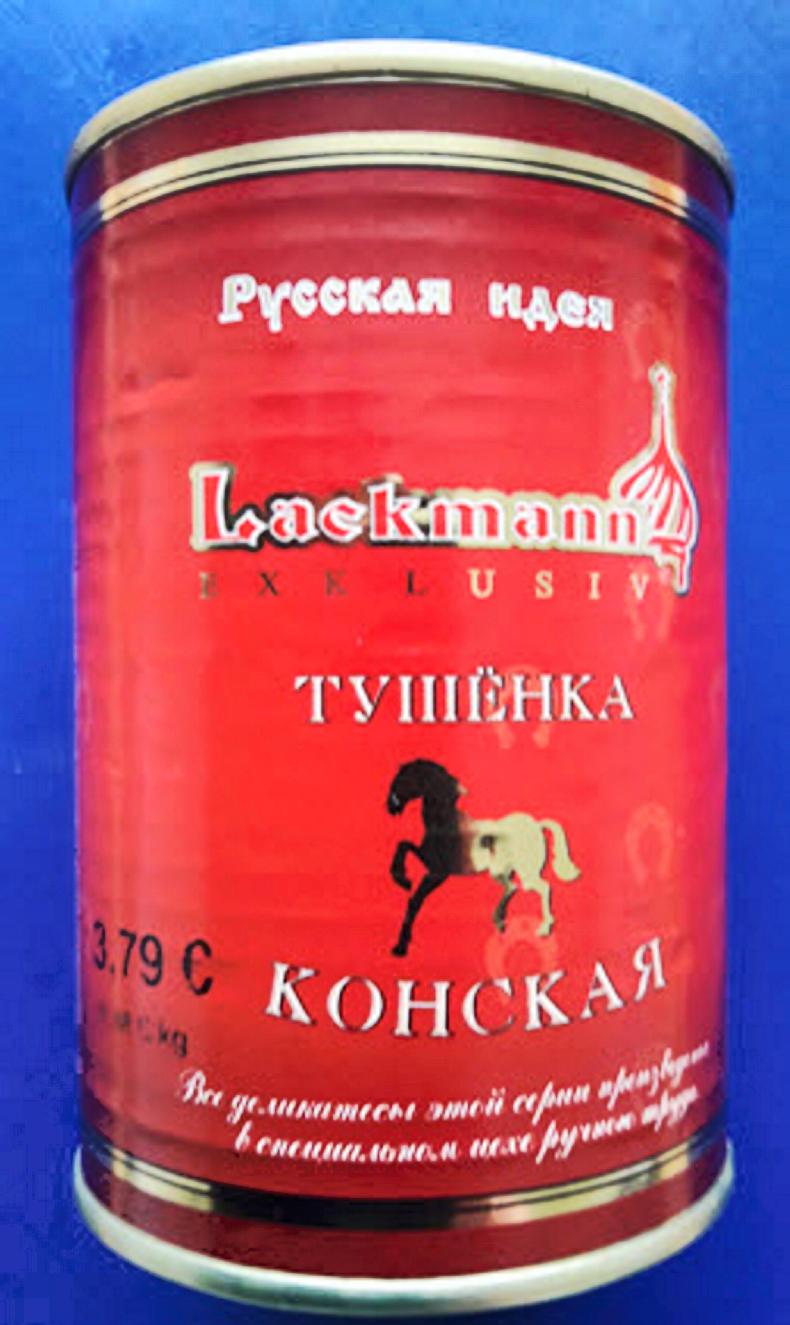
Tins of Lackmann Tuschonka Konskaya horse meat were recalled due to uncertainty as to the traceability of the meat in May 2019.
Meanwhile in London, the world’s first lab-grown burger was cooked and eaten at a livestreamed news conference. The cost raised eyebrows. It was widely suggested that the price would fall and that cultured meat would be an affordable option in the future.
International year of Quinoa
Labelling is a bugbear for many. Claims on products is another. In 2007 the EU banned the use of the word “superfood” on labels unless that product had a health claim that is “clear, accurate and based on scientific evidence”, and it must explain why the food is good for the health of consumers. 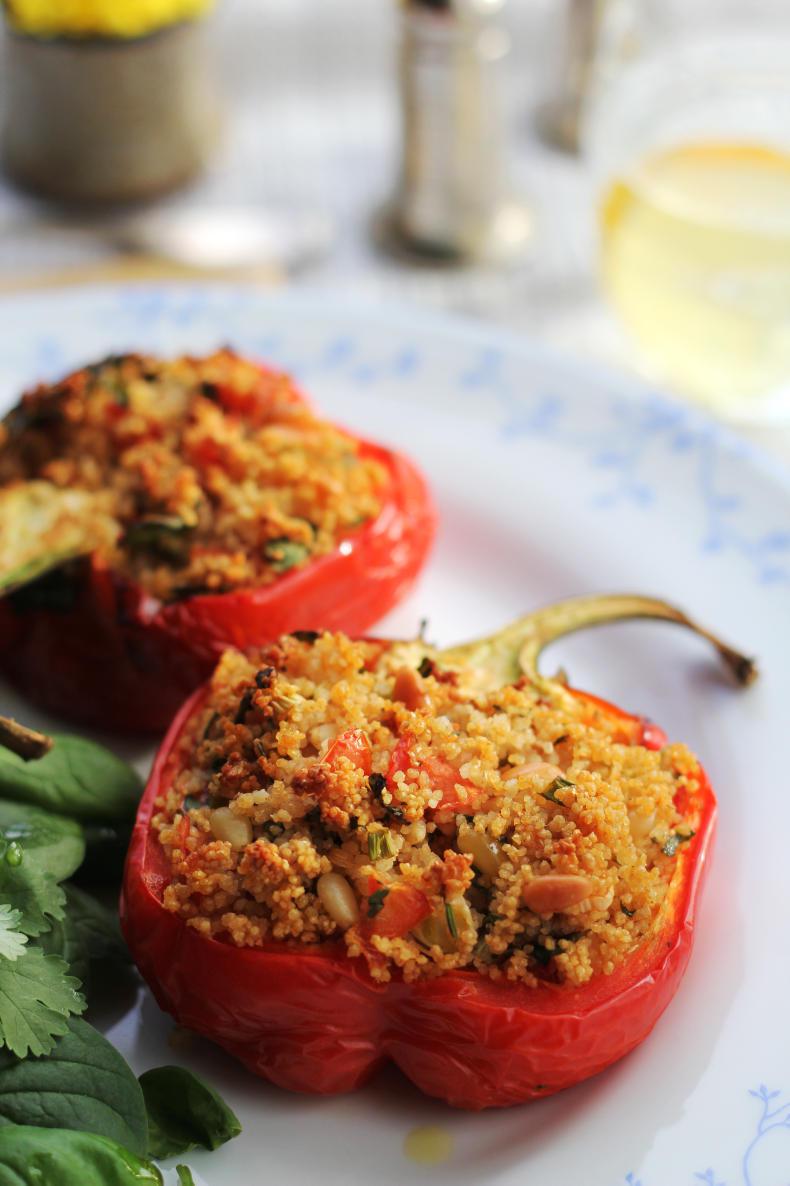
Quinoa stuffed peppers.
Chia seeds were among the early “superfoods”. People added them to overnight oats, demand increased and then prices rose, making them less attractive. Quinoa also rose in popularity in western societies this decade. Reports suggest that the demand made it unaffordable to the Peruvians and Bolivians for whom it had been a staple for thousands of years.
Stating that “Quinoa can play an important role in eradicating hunger, malnutrition and poverty”, the United Nations Food and Agriculture Organization declared 2013 as the International Year of Quinoa.
One of the big unavoidable trends that emerged during the 2010s was veganism, and this became mainstream in 2014. It took approximately 70 years to get there but between social media and a refocusing of the messaging, this lifestyle choice became more common.
It appears that the animal welfare debate did not resonate with people as much as the positive environmental and health connotations associated with going vegan. People are motivated by fear and the vegan movement has used this fear to bolster its cause. Veganuary started in 2014 and within six years, 400,000 people worldwide signed up to give up meat and dairy for the month of January. Vegan bloggers and writers like the Happy Pear and Roz Purcell became popular and veganism took on an air of fashion-ability.
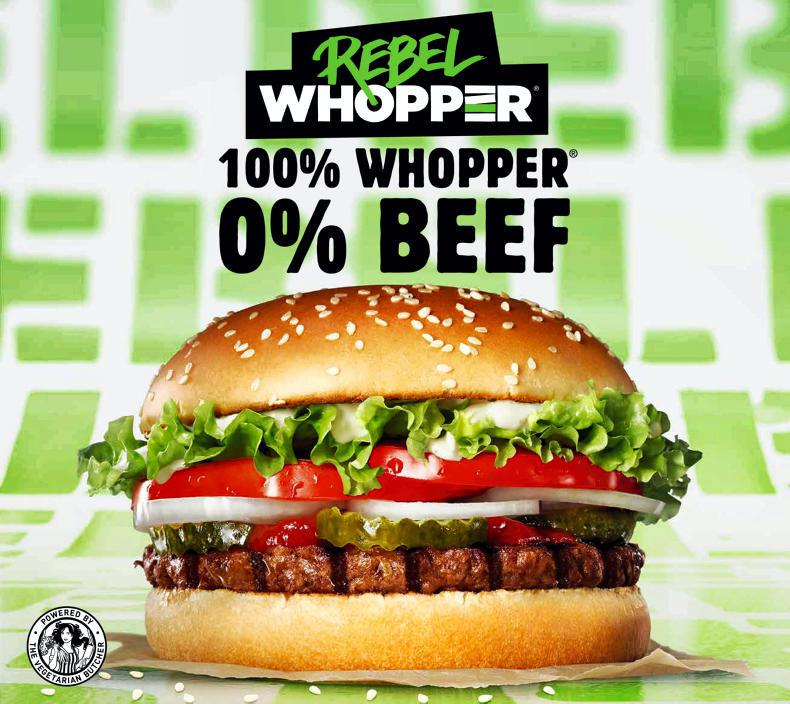
Burger King's meat free burger - 'The Rebel Whopper'
Grace Binchy, insight and trends specialist with Bord Bia, said the food marketing body’s research shows that although the pillars of sustainability were important to consumers making this choice, so was “identity and how they want to be seen.”
Brands and manufacturers, including traditional meat and dairy companies, started to take notice. IKEA launched vegan meatballs and the Impossible Burger was born. Vegan-ready meals and foods are now common in local retailers and the fast-food giants also have vegan offerings competing directly with their big-name burgers.
Bord Bia’s “What Ireland ate last night” research revealed that many of us claim to be trying to change our diets in conjunction with trends and what we hear in the media. Forty per cent think they should reduce the amount of meat their household eats based on what they hear in the media and 19% would consider going vegan in the future.
Healthy fats are the fad of 2014
Saturated fat had become a public health enemy when butter appeared on the cover of Time magazine in 2014. That report outlined how the vilified nutrient didn’t actually harm health or cause weight gain, when consumed in moderation.
Avocado toast has become synonymous with the 2010s and millennials. The green fruit benefited from an association with good health and massive promotion on social media. Similarly to butter, the revelation that not all fats are evil has given the ‘avo and toast’ a massive boost in popularity.
However, Irish farmers were angered in 2019 when an RTÉ programme What planet are you on gave vegan advocate Dr Marco Springmann the opportunity to suggest that, for nutritional reasons, we should replace locally produced Irish cheese with avocados. As most avocados are produced in Mexico, and reports abound about illegal deforestation to facilitate their production, this trend does not appear to be environmentally sound.
Also around this year, Kombucha, the fizzy fermented drink, became the yeasty beverage of choice for those who wanted help with their digestion. This claim is thanks to the probiotics produced by SCOBY or “symbiotic culture of bacteria and yeast”.
Misunderstood genetically
modified organisms
Genetic modification allows plant breeders to improve crops in a more precise and targeted way, while also speeding up the breeding process. However, there is a lack of consumer acceptance, with the result that the EU has failed to embrace this technology. In 2015, 19 out of the 27 member states voted to either partially or fully ban the cultivation of GMOs.
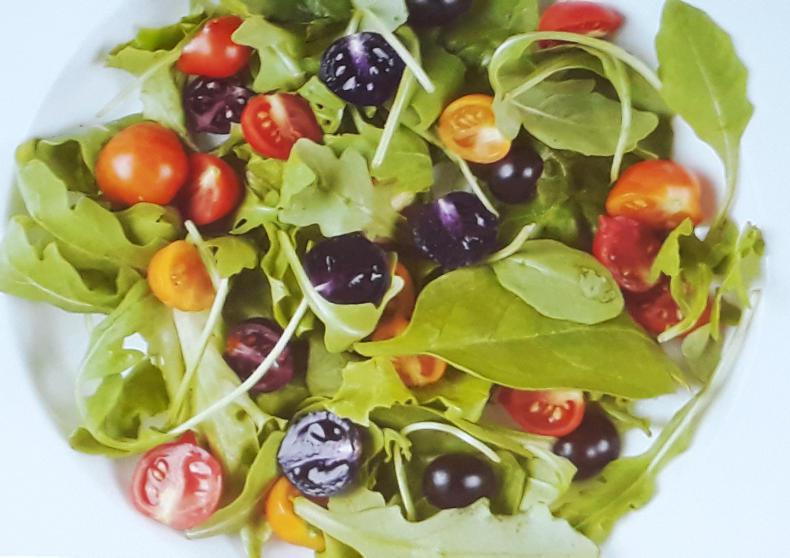
A salad containing tomatoes with different colours, each of which was genetically modified to carry high levels of individual health enhancing substances.
Although this is attributed to the demands of the EU consumer, a Eurobarometer survey published earlier this year indicated that the “level of concern” about genetically engineered food in Europe has decreased significantly, from 69% in 2010 to 27% in 2019.
The North American Meat Institute (NAMI) previously told the Irish Farmers Journal that with demand for protein set to increase by 50%, there is room for everyone in the protein market. It also said that genetically modified (GM) labelling laws could see consumers move away from alternative meats. They said this because consumers who seek out these meatless products (such as Impossible Burgers) because they believe they are “cleaner” foods, could be taken aback when they realise they contain large numbers of ingredients, many of which are GM.
All kale Queen Bey
At some point in this decade, everyone owned a juicer. Admit it! Although the jury is out as to whether juicing of fruits and vegetables does actually reduce inflammation, boost your immune system, reduce your risk of cancer, or sustain your microbiomes, the trend took hold.
Something else that was considered vital to include in your juice was kale. It was so popular that Beyoncé opened the video for her song 7/11 dancing on a balcony in her underwear wearing a KALE (styled like the University of YALE) sweatshirt. That type of publicity and marketing is something that no vegetable can buy but, even so, in 2015 juicing started to peter out and millions of nutri-bullets were moth-balled.
Analysts of the food industry dubbed 2016 “the year of the sugar tax”, as public disquiet about sugar peaked. Everyone with a voice, including the World Health Organisation (WHO), celebrity chefs and social media influencers, called on governments to tax sugar.
We’ve been counting calories for decades but ‘low’ and ‘sugar-free’ were big this decade. As expected, brands responded and tried to cut down on the sugar content in their products. Examples include the reduced-sugar (-36%) M&S Percy Pigs and a Cadbury Dairy Milk with 30% less sugar.
Although people wanted to give up refined sugar, they still wanted to replace it with “natural alternatives”. Enter agave, stevia, good old honey and the “liquid gold” that is manuka honey. Made from the nectar of the manuka bush flower, it is claimed that this particular honey has antibacterial properties and health benefits. As it can retail for up to NZ$500 (€275) for a small jar, it is an important New Zealand export. It is therefore hardly surprising that rumours of “fake” Manuka honey are rife globally.
Following the 2014 release of the Netflix documentary Cowspiracy, which documented the impact of animal agriculture on the environment, in 2017 the streaming service brought us What the Health. This one focused on the health impact of a meat and dairy diet. It suffered a blow when many of the claims were debunked, including the claim that eating an egg a day is as bad for you as smoking.
As a side note, Cowspiracy was produced by Leonardo DiCaprio who suffered a blow to his own carbon credentials when it was revealed that he flew from Cannes to New York and back (8,000 miles) in a private jet to accept an award on climate change. Credit that.
In 2017, the CSO updated its Consumer Price Index (CPI) basket of goods, removing products with declining popularity and adding ones that shoppers were adding to their baskets more frequently (Table 3). Out with the lamb chops and deep fat trying and in with the avocado and processed just about everything.
What’s in a name?
Dairy alternatives began to reach a wider audience as we edged closer to the end of the decade. In fact, it had become increasingly difficult to avoid plant milks. Although you are not actually allowed call them “milks”, most do. Back in 2017, the European Court of Justice clarified that within the EU, a number of dairy terms must only be used on products that come from an animal.
“Milk” is the most obvious one, but the court also reaffirmed this status for “cream”, “butter”, “cheese”, and “yoghurt”, all of which are protected under EU law. Attempting to modify these terms by adding a descriptor is not allowed either, so “veggie cheese” or “plant milk” are not allowed.
Mintel research advises the dairy industry that with “environmental reasons encouraging a growing number of Irish consumers to switch to milk alternatives, milk producers will need to highlight the steps they are taking to reduce their carbon footprint to demonstrate their green credentials to increasingly eco-conscious consumers.”
The same Mintel research published in January of this year showed that Irish consumers continue to show a strong preference for chilled standard cow’s milk, despite the growing popularity of non-dairy alternatives. This reflects the fact that milk is an important source of vitamins within Irish consumers’ diets.
The value of global tourism in 2018 was estimated at $10.8 trillion. In 2018, food and beverages accounted for 35% of overall visitor spend here in Ireland. However, for those who have not travelled to our fair isle previously, when asked “what stands out when you think of Irish food and drink”, 32% replied “beer”. This was followed by potatoes (15%), whiskey (14%) with Guinness and bacon and cabbage on equal billing at 10%. Before it turned its focus to encouraging us all to holiday at home due to the impact of COVID-19, Fáilte Ireland, the National Tourism Development Authority, had identified our food offering as an underutilised hook to promote Ireland as a tourist destination. And in 2018, it launched its food and drink strategy for the period 2018-2023.
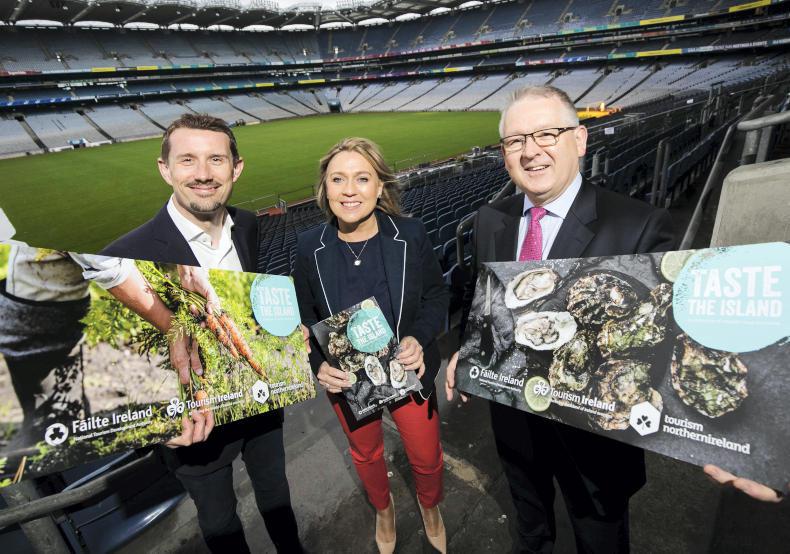
Travel writer Pól Ó Conghaile, Fáilte Ireland's food tourism, strategy and programmes manager Tracey Coughlan and Paul Keeley, director of commercial development.
This replaced a previous strategy (2014-2016) which had sought to move the perception of Ireland as a great food producer to a nation with its own authentic cuisine. Initiatives to come out of this strategy included the Burren Food Trail and the Boyne Valley Food Series. And the research suggests that this was a success, with exiting visitors now saying that Irish food exceeded expectations.
The main thrust of this new strategy was for consumers to be able to get great food anywhere in the country within their own budget. It makes sense for Ireland, a food-producing nation, to target our food as a way to persuade potential visitors to travel to our country, particularly when the value on that is €2bn. By 2022, it was anticipated that global tourism would support 328m jobs, or one in every 10 jobs, and half would be in the food, hospitality and hotel sector.
Unfortunately, in the medium term, that world is now gone.
In this year, unemployment in Ireland fell to a 10-year low of 4.8%, and Bord Bia conducted its study “what Ireland ate last night”, comparing the dinner plate of consumers in 2011 and 2019.
The findings were not surprising, considering what we had seen through the decade and they provided a research-proven summary. Ethical considerations (environmental factors, fair trade, food miles etc) had become significantly more important (+15% compared to 2011) when choosing evening meals.
We also claim to be placing a greater emphasis on provenance nowadays versus 2011. Of those surveyed, 76% use Irish where possible and 65% (up 10%) agree that food of Irish origin is worth paying a little more for. Taste remains the driver of choice for evening meals. Health and wellbeing were also significant, with 42% saying that they are more aware of the impact that the food they eat has on their bodies.
“Busier lives” are having an impact on the choices we make and we want convenience. More time-pressured lifestyles have driven less from-scratch cooking of evening meals compared to 2011 (12% decrease on those that scratch cook “every” or “most” days). This is further supported through the increased weekly penetration of the use of readymade convenience foods, takeaways and home deliveries, and fast food. In fact, almost one in 10 of all our evening meals are a takeaway or home delivery. That said, the meat (red) and two veg remained the most prevalent of the adult evening meals consumed in Ireland. However, beef research by Bord Bia in 2019 showed that the most common types of beef purchased were mince (71%) and steak (63%), with joints well behind.
Paleo, keto, intermittent fasting – there have been many diet fads across the decade but the latest one to gain popularity is “clean eating”. This is a diet that consists of consuming strictly “whole” or “unprocessed” foods. It is linked with the eating disorder orthorexia nervosa, where people become obsessed with the composition and origin of food and may end up significantly limiting their diet to the detriment of their health. Following the death of a man in Cork from the condition in 2019, Bodywhys, the eating disorders organisation, advises against it.
Online sales represented 4.5% of the turnover for all businesses in July 2020, down from 6.7% in June, which was the highest online share since collection of this data began in November 2018. COVID-19 has undoubtedly had an impact on online food sales. Although still low; food, beverage and tobacco online sales reached 6.2% in June (0.9% in March 2019). This dropped to 4.1% in July so the long-term impact of the pandemic on food trends remains to be seen. A lot more people can make sourdough bread though.
Read more
Plough On: striking the right chord
Plough On: back to our roots for food and agriculture
Plough On: Irish Country Living cover star catch-up
The new decade has not opened the way that we would have wanted. The challenges that in 2019 seemed almost insurmountable now play second fiddle to what will define 2020 – COVID-19 and all the ramifications it brings. However, we all have to eat and a new decade does offer the opportunity to reflect on what has happened in relation to food trends over the past 10 years, so we can anticipate what lies ahead.
The topic I chose for my Nuffield Scholarship in 2011 was “Dominance, competition and consumer demand – the impact on meat protein producers.” Back then we were in a recession and the world was a different place. But consumer demand was and will remain a pivotal influence on the food industry. Over the last 10 years, new products and fads have entered our lexicon, such as avocado toast, sustainable cooking and ‘free-from’ foods. Online influence is playing a greater role.
There is, however, an overriding trend, that has persisted through the decade, with many other spin-off trends emerging from it. The 2010s was the decade in which health and wellness jumped from being considered hippie-ish to people appreciating that there was more to health than reactively treating illness. Its popularity was helped by celebrity endorsements, such as Oprah, and in 2014, Time
magazine said it was the start of a mindful revolution.
As “wellness” is quite a vague term, incorporating body and mind, it is a fertile place for entrepreneurs to explore. It also happens to be quite profitable, so don’t expect this trend to fade any time soon.
But first, who are we now?
Ireland’s population in August 2020 was 4,946,815, just 0.06% of the total global population. In 2010, our population was 4,554,321. Rural people make up 37% of our population, leaving 63% in urban centres. Although our population has increased by over 350,000, the rural to urban ratio has not changed over the decade. The median age in Ireland is 38.2 years, up from 34.4 in 2010. In developed countries the older demographic is set to become the biggest cohort of the population. This shift will affect dietary choices.
Many different factors have helped to shape and mould our society over the past decade. Some of these are readily identified, while others are more diffuse. This review looks at the major and identifiable changes.
The start of the decade was marked by the banking crisis. The bank guarantee may have been in 2008, but Ireland’s bailout was only announced in November 2010. Austerity followed and it was 2014 before green shoots started to appear.
The food euro
CSO Household Budget Survey (HBS) data shows that the average weekly expenditure on food for all Irish households was €810 in 2010, 3% higher than the €787 recorded five years earlier. The proportion of this spent on food dropped from 18.1% in 2005 to 16.2% in 2010. In 2010, the proportion of total household expenditure spent on housing (rent, mortgage etc) exceeded that spent on food for the first time.
HBS data from 2015-2016 showed the weekly expenditure for all households in the State to be €845 (+4.3%). Again, the proportion of total expenditure relating to food dropped, falling to a low of 14.6%. The proportion of total expenditure on food has declined steadily over the past 35 years, from 27.7% to 14.6%. Expectations are that the HBS of 2021 will reveal a further fall in the food euro.
The rise of the discounter
Statistics show that the value of the grocery market in Ireland declined in 2010. This was due to deflation and shoppers trading down price tiers, switching retail outlets, and seeking out promotional offers (yellow pack) with value lines the only market segment to report market growth in 2010.
Kantar data showed increasing sales and store numbers in the discount segment in 2010.
This trend continued unabated throughout the decade (see graphs). Private labels also started to put increasing pressure on traditional brands, accounting for 33% of grocery sales. By 2019, this figure stood at 56%. Bucking the cheaper option was organic food sales, which reached almost €100m in 2010. The vast majority (70%) of this was imported. The trend towards the health-conscious consumer, which would be a dominant and lasting influence, was starting to raise its head.
Food porn
The now Facebook-owned Instagram social media platform launched in 2010. Chefs, social media influencers, and marketing managers latched on to ‘Instagrammable food’, believing that Instagram influences how we eat.
The site gained rapid popularity through the decade, surpassing one billion users as of May 2019. At the time of writing this, the most-liked photo on Instagram is a picture of an egg, with 54.4m likes. This post was created solely to surpass the previous record of “most likes” by Kylie Jenner. Instagram became the fourth most downloaded mobile app of the 2010s.

Viral foods are focused more on looks than on taste. According to Sinead McCarthy, researcher at the Teagasc Ashtown Food Centre, “if that is the selling point, many of these fads won’t last. Research shows that taste is the primary reason for consuming something. If it doesn’t taste good, it doesn’t matter what health, beauty or other benefits the product purports to have, you are not going to buy it again.”
In 2011, the Oireachtas library and research service published a spotlight report on obesity, outlining the scale of the issue, with 61% of Irish adults and 22% of children overweight (SLÁN 2007). The Healthy Ireland Survey showed that, in 2019, 60% of those surveyed were overweight. A drop of just 1% despite what McCarthy describes as “a mega trend developing in Ireland” – health.
In response to the SLÁN data, the Irish Heart Foundation (IHF) said that the overwhelming influences of obesity in 99% of the population are environmental. These include marketing, advertising, increasing portion sizes, accessibility and availability of foods and facilities, increased automation and increased car use among other factors.
The Lancet medical journal called out the primary culprit as the “powerful global food industry which is producing more processed, affordable, and effectively marketed food than ever before”. It referred to this trend as “passive overconsumption” – food getting cheaper with more efficient distribution and an increased supply of cheap, palatable, energy-dense foods that are well marketed.
Healthy kids meals
How a brand is perceived to be responding to the demands of consumers can play a role in its success. McDonald’s Ireland introduced a fruit bag, or carrot sticks, as an alternative to chips, and a bottle of water or a carton of milk instead of a fizzy drink in their happy meals in 2004. Social media pressure saw them introduce a wrap in 2018.
This “healthy alternative” was not introduced in the American market until 2011 when a number of fast-food chains started to latch on to the need to join the fight against childhood obesity. McDonald’s, Burger King and Subway hopped on the bandwagon.
The year opened with successive storms that battered the country, particularly in the south and west. However, free water falling from the sky only bolstered protesters’ opposition to charges being put on this our most precious commodity. In 2012, the Government confirmed that Bord Gáis would set up and run Irish Water. Rural people generally pay for water between local schemes and private wells but not even the rise of environmental concerns over water security could convince some people that water was worth paying for. Protesters vowed to continue their opposition until charges were abolished.
Olympic boost
Sporting events which attract crowds can provide good opportunities for food businesses. The Olympic Studies Centre called out the growth in sustainable food in London as one of the unseen benefits of London 2012. However, in advance of Rio 2016, critics were claiming that the sponsorship of the Olympics by companies such as Kellogg’s and Coca-Cola was promoting unhealthy foods that would not be consumed by athletes. Health, advertising, and marketing, again in the spotlight.
Horse meat scandal
This scandal emerged when Irish food inspectors found traces of horsemeat in some frozen beef burgers stocked by UK supermarkets, including Lidl and Tesco. The retailers acted quickly to appease customer concerns. Some analysts claim the move away from cheaper frozen products was short-lived, while others described it as having a “lasting effect”.

Tins of Lackmann Tuschonka Konskaya horse meat were recalled due to uncertainty as to the traceability of the meat in May 2019.
Meanwhile in London, the world’s first lab-grown burger was cooked and eaten at a livestreamed news conference. The cost raised eyebrows. It was widely suggested that the price would fall and that cultured meat would be an affordable option in the future.
International year of Quinoa
Labelling is a bugbear for many. Claims on products is another. In 2007 the EU banned the use of the word “superfood” on labels unless that product had a health claim that is “clear, accurate and based on scientific evidence”, and it must explain why the food is good for the health of consumers. 
Quinoa stuffed peppers.
Chia seeds were among the early “superfoods”. People added them to overnight oats, demand increased and then prices rose, making them less attractive. Quinoa also rose in popularity in western societies this decade. Reports suggest that the demand made it unaffordable to the Peruvians and Bolivians for whom it had been a staple for thousands of years.
Stating that “Quinoa can play an important role in eradicating hunger, malnutrition and poverty”, the United Nations Food and Agriculture Organization declared 2013 as the International Year of Quinoa.
One of the big unavoidable trends that emerged during the 2010s was veganism, and this became mainstream in 2014. It took approximately 70 years to get there but between social media and a refocusing of the messaging, this lifestyle choice became more common.
It appears that the animal welfare debate did not resonate with people as much as the positive environmental and health connotations associated with going vegan. People are motivated by fear and the vegan movement has used this fear to bolster its cause. Veganuary started in 2014 and within six years, 400,000 people worldwide signed up to give up meat and dairy for the month of January. Vegan bloggers and writers like the Happy Pear and Roz Purcell became popular and veganism took on an air of fashion-ability.

Burger King's meat free burger - 'The Rebel Whopper'
Grace Binchy, insight and trends specialist with Bord Bia, said the food marketing body’s research shows that although the pillars of sustainability were important to consumers making this choice, so was “identity and how they want to be seen.”
Brands and manufacturers, including traditional meat and dairy companies, started to take notice. IKEA launched vegan meatballs and the Impossible Burger was born. Vegan-ready meals and foods are now common in local retailers and the fast-food giants also have vegan offerings competing directly with their big-name burgers.
Bord Bia’s “What Ireland ate last night” research revealed that many of us claim to be trying to change our diets in conjunction with trends and what we hear in the media. Forty per cent think they should reduce the amount of meat their household eats based on what they hear in the media and 19% would consider going vegan in the future.
Healthy fats are the fad of 2014
Saturated fat had become a public health enemy when butter appeared on the cover of Time magazine in 2014. That report outlined how the vilified nutrient didn’t actually harm health or cause weight gain, when consumed in moderation.
Avocado toast has become synonymous with the 2010s and millennials. The green fruit benefited from an association with good health and massive promotion on social media. Similarly to butter, the revelation that not all fats are evil has given the ‘avo and toast’ a massive boost in popularity.
However, Irish farmers were angered in 2019 when an RTÉ programme What planet are you on gave vegan advocate Dr Marco Springmann the opportunity to suggest that, for nutritional reasons, we should replace locally produced Irish cheese with avocados. As most avocados are produced in Mexico, and reports abound about illegal deforestation to facilitate their production, this trend does not appear to be environmentally sound.
Also around this year, Kombucha, the fizzy fermented drink, became the yeasty beverage of choice for those who wanted help with their digestion. This claim is thanks to the probiotics produced by SCOBY or “symbiotic culture of bacteria and yeast”.
Misunderstood genetically
modified organisms
Genetic modification allows plant breeders to improve crops in a more precise and targeted way, while also speeding up the breeding process. However, there is a lack of consumer acceptance, with the result that the EU has failed to embrace this technology. In 2015, 19 out of the 27 member states voted to either partially or fully ban the cultivation of GMOs.

A salad containing tomatoes with different colours, each of which was genetically modified to carry high levels of individual health enhancing substances.
Although this is attributed to the demands of the EU consumer, a Eurobarometer survey published earlier this year indicated that the “level of concern” about genetically engineered food in Europe has decreased significantly, from 69% in 2010 to 27% in 2019.
The North American Meat Institute (NAMI) previously told the Irish Farmers Journal that with demand for protein set to increase by 50%, there is room for everyone in the protein market. It also said that genetically modified (GM) labelling laws could see consumers move away from alternative meats. They said this because consumers who seek out these meatless products (such as Impossible Burgers) because they believe they are “cleaner” foods, could be taken aback when they realise they contain large numbers of ingredients, many of which are GM.
All kale Queen Bey
At some point in this decade, everyone owned a juicer. Admit it! Although the jury is out as to whether juicing of fruits and vegetables does actually reduce inflammation, boost your immune system, reduce your risk of cancer, or sustain your microbiomes, the trend took hold.
Something else that was considered vital to include in your juice was kale. It was so popular that Beyoncé opened the video for her song 7/11 dancing on a balcony in her underwear wearing a KALE (styled like the University of YALE) sweatshirt. That type of publicity and marketing is something that no vegetable can buy but, even so, in 2015 juicing started to peter out and millions of nutri-bullets were moth-balled.
Analysts of the food industry dubbed 2016 “the year of the sugar tax”, as public disquiet about sugar peaked. Everyone with a voice, including the World Health Organisation (WHO), celebrity chefs and social media influencers, called on governments to tax sugar.
We’ve been counting calories for decades but ‘low’ and ‘sugar-free’ were big this decade. As expected, brands responded and tried to cut down on the sugar content in their products. Examples include the reduced-sugar (-36%) M&S Percy Pigs and a Cadbury Dairy Milk with 30% less sugar.
Although people wanted to give up refined sugar, they still wanted to replace it with “natural alternatives”. Enter agave, stevia, good old honey and the “liquid gold” that is manuka honey. Made from the nectar of the manuka bush flower, it is claimed that this particular honey has antibacterial properties and health benefits. As it can retail for up to NZ$500 (€275) for a small jar, it is an important New Zealand export. It is therefore hardly surprising that rumours of “fake” Manuka honey are rife globally.
Following the 2014 release of the Netflix documentary Cowspiracy, which documented the impact of animal agriculture on the environment, in 2017 the streaming service brought us What the Health. This one focused on the health impact of a meat and dairy diet. It suffered a blow when many of the claims were debunked, including the claim that eating an egg a day is as bad for you as smoking.
As a side note, Cowspiracy was produced by Leonardo DiCaprio who suffered a blow to his own carbon credentials when it was revealed that he flew from Cannes to New York and back (8,000 miles) in a private jet to accept an award on climate change. Credit that.
In 2017, the CSO updated its Consumer Price Index (CPI) basket of goods, removing products with declining popularity and adding ones that shoppers were adding to their baskets more frequently (Table 3). Out with the lamb chops and deep fat trying and in with the avocado and processed just about everything.
What’s in a name?
Dairy alternatives began to reach a wider audience as we edged closer to the end of the decade. In fact, it had become increasingly difficult to avoid plant milks. Although you are not actually allowed call them “milks”, most do. Back in 2017, the European Court of Justice clarified that within the EU, a number of dairy terms must only be used on products that come from an animal.
“Milk” is the most obvious one, but the court also reaffirmed this status for “cream”, “butter”, “cheese”, and “yoghurt”, all of which are protected under EU law. Attempting to modify these terms by adding a descriptor is not allowed either, so “veggie cheese” or “plant milk” are not allowed.
Mintel research advises the dairy industry that with “environmental reasons encouraging a growing number of Irish consumers to switch to milk alternatives, milk producers will need to highlight the steps they are taking to reduce their carbon footprint to demonstrate their green credentials to increasingly eco-conscious consumers.”
The same Mintel research published in January of this year showed that Irish consumers continue to show a strong preference for chilled standard cow’s milk, despite the growing popularity of non-dairy alternatives. This reflects the fact that milk is an important source of vitamins within Irish consumers’ diets.
The value of global tourism in 2018 was estimated at $10.8 trillion. In 2018, food and beverages accounted for 35% of overall visitor spend here in Ireland. However, for those who have not travelled to our fair isle previously, when asked “what stands out when you think of Irish food and drink”, 32% replied “beer”. This was followed by potatoes (15%), whiskey (14%) with Guinness and bacon and cabbage on equal billing at 10%. Before it turned its focus to encouraging us all to holiday at home due to the impact of COVID-19, Fáilte Ireland, the National Tourism Development Authority, had identified our food offering as an underutilised hook to promote Ireland as a tourist destination. And in 2018, it launched its food and drink strategy for the period 2018-2023.

Travel writer Pól Ó Conghaile, Fáilte Ireland's food tourism, strategy and programmes manager Tracey Coughlan and Paul Keeley, director of commercial development.
This replaced a previous strategy (2014-2016) which had sought to move the perception of Ireland as a great food producer to a nation with its own authentic cuisine. Initiatives to come out of this strategy included the Burren Food Trail and the Boyne Valley Food Series. And the research suggests that this was a success, with exiting visitors now saying that Irish food exceeded expectations.
The main thrust of this new strategy was for consumers to be able to get great food anywhere in the country within their own budget. It makes sense for Ireland, a food-producing nation, to target our food as a way to persuade potential visitors to travel to our country, particularly when the value on that is €2bn. By 2022, it was anticipated that global tourism would support 328m jobs, or one in every 10 jobs, and half would be in the food, hospitality and hotel sector.
Unfortunately, in the medium term, that world is now gone.
In this year, unemployment in Ireland fell to a 10-year low of 4.8%, and Bord Bia conducted its study “what Ireland ate last night”, comparing the dinner plate of consumers in 2011 and 2019.
The findings were not surprising, considering what we had seen through the decade and they provided a research-proven summary. Ethical considerations (environmental factors, fair trade, food miles etc) had become significantly more important (+15% compared to 2011) when choosing evening meals.
We also claim to be placing a greater emphasis on provenance nowadays versus 2011. Of those surveyed, 76% use Irish where possible and 65% (up 10%) agree that food of Irish origin is worth paying a little more for. Taste remains the driver of choice for evening meals. Health and wellbeing were also significant, with 42% saying that they are more aware of the impact that the food they eat has on their bodies.
“Busier lives” are having an impact on the choices we make and we want convenience. More time-pressured lifestyles have driven less from-scratch cooking of evening meals compared to 2011 (12% decrease on those that scratch cook “every” or “most” days). This is further supported through the increased weekly penetration of the use of readymade convenience foods, takeaways and home deliveries, and fast food. In fact, almost one in 10 of all our evening meals are a takeaway or home delivery. That said, the meat (red) and two veg remained the most prevalent of the adult evening meals consumed in Ireland. However, beef research by Bord Bia in 2019 showed that the most common types of beef purchased were mince (71%) and steak (63%), with joints well behind.
Paleo, keto, intermittent fasting – there have been many diet fads across the decade but the latest one to gain popularity is “clean eating”. This is a diet that consists of consuming strictly “whole” or “unprocessed” foods. It is linked with the eating disorder orthorexia nervosa, where people become obsessed with the composition and origin of food and may end up significantly limiting their diet to the detriment of their health. Following the death of a man in Cork from the condition in 2019, Bodywhys, the eating disorders organisation, advises against it.
Online sales represented 4.5% of the turnover for all businesses in July 2020, down from 6.7% in June, which was the highest online share since collection of this data began in November 2018. COVID-19 has undoubtedly had an impact on online food sales. Although still low; food, beverage and tobacco online sales reached 6.2% in June (0.9% in March 2019). This dropped to 4.1% in July so the long-term impact of the pandemic on food trends remains to be seen. A lot more people can make sourdough bread though.
Read more
Plough On: striking the right chord
Plough On: back to our roots for food and agriculture
Plough On: Irish Country Living cover star catch-up











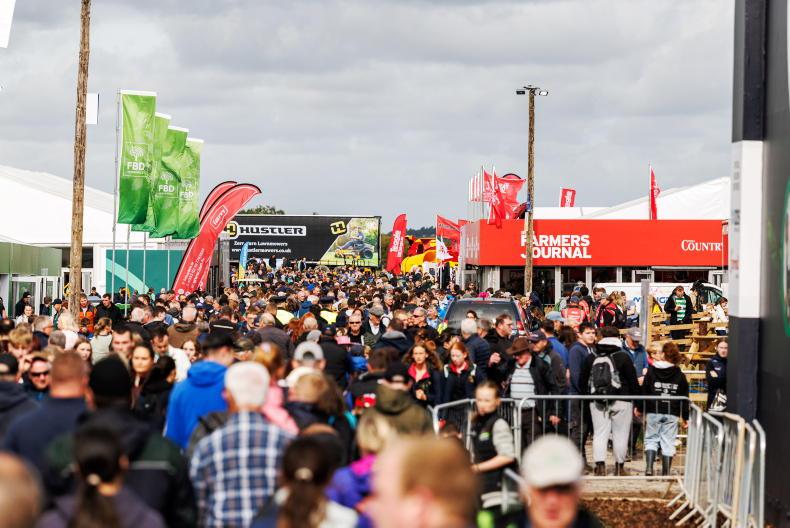
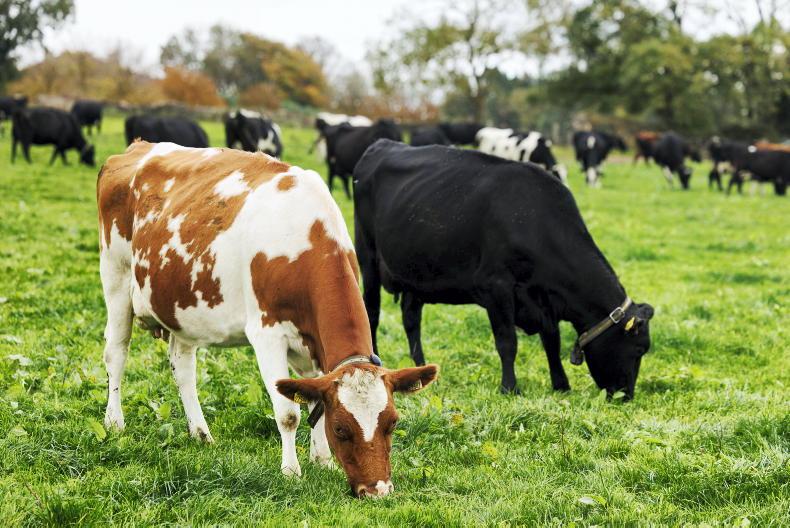
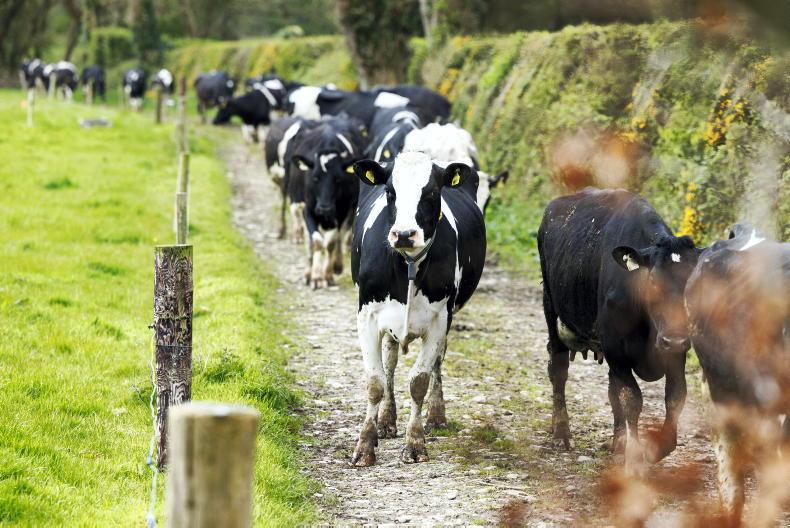

SHARING OPTIONS